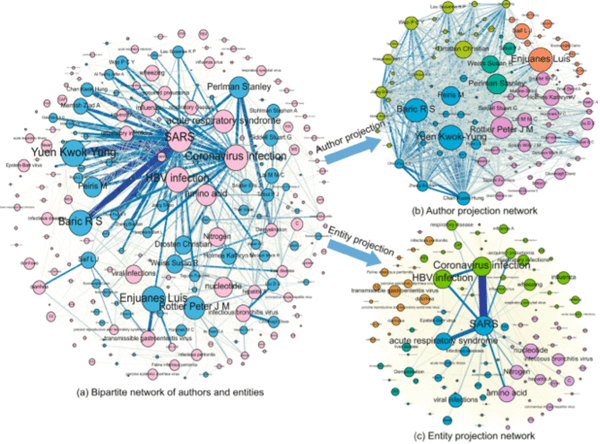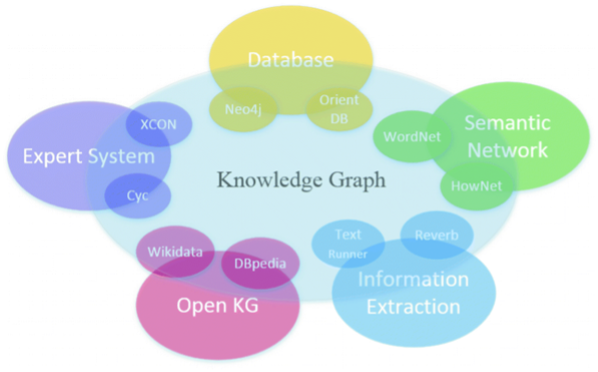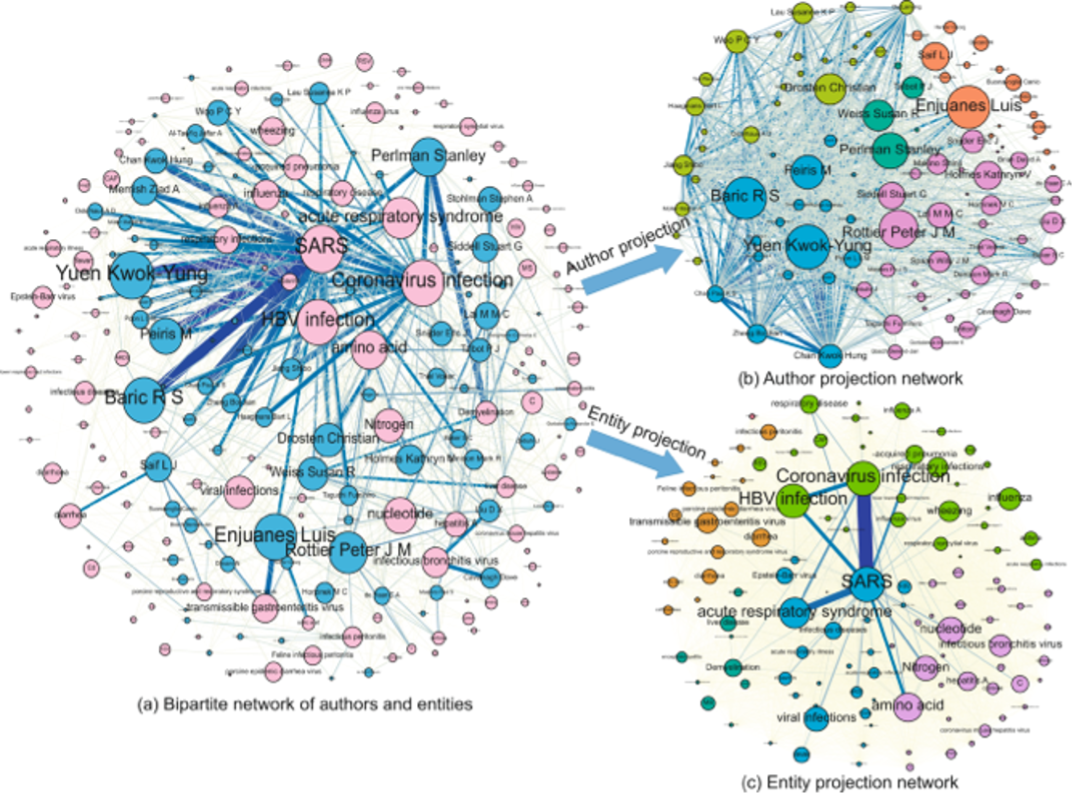EXPERTS - A Tool for Discovering, Expanding and Augmenting a Subject Matter Expert Network
EXPERTS is a cloud based application that uses Artificial Intelligence (AI) to support Model-Based Systems Engineering (MBSE) initiatives with a dynamic Subject Matter Expert (SME) database and to provide individual SMEs with the ability to radically widen their scope of reach and depth of penetration into advances in their field. This application provides technical, business, and program management the ability to quickly identify and connect with NASA, academic and industry experts for each technology in the NASA Technology Area Breakdown Structure (TABS) and taxonomies from other technical, business and programmatic areas.
Project Description and Problem Addressed
The purpose of this application is to aid the NASA technical and business community by:
- providing a rapid method of identifying Subject Matter Experts that are not currently in the NASA network
- aiding NASA technical Subject Matter Experts in identifying technological advancements that are relevant to MBSE architectures
- aiding NASA business and programmatic Subject Matter Experts in identifying commercial space company interest or activity in relevant areas
- developing analytics for the assessment of gaps in expertise and investment in technologies that can be evaluated against the need driven by planned and potential missions.

Figure 1: Sample showing use of graph visualization to identify experts from published articles
This application is a continuation and enhancement of the artificial intelligence capabilities developed in the “Eureka – Model Based Systems Approach for Space Architecture Definition” previously led by Von Braun Center for Science & Innovation (VCSI) and completed in fall 2019.
The EXPERTS team was comprised of personnel from Bintel, Purdue University, several universities and the VCSI Subject Matter Experts. The mission of this team was to improve and diversify the available pool of Subject Matter Experts and assist them in maintaining awareness of rapid developments that may affect their areas of expertise.
With EXPERTS, we developed a proof of concept modular solution to support a Digital Thread (DT) architecture under development for space architectures for the planning, development, production, sustainment and end-of-life stages of a system. It will be configurable for any research network including decentralized teams, internal NASA, and extensible to public data sources and projects.
The technical goal of EXPERTS is to capture and augment the SME networks involved in the MBSE process to enhance the decision-making process. Topic mapping provides an ability to group or cluster documents and paragraphs into categories that enable creation of enriched index/linking and an interactive visual user interface.
The volume and velocity of data and inputs required to make critical decisions and trades for space systems, technologies, and procurements are tremendous and increasing rapidly. Retaining a network of Subject Matter Experts that are able to distill the information in their area of expertise is crucial for engineering and mission leadership.
With today’s international communities driving rapid advancement of multiple interrelated technologies and business interests, Subject Matter Experts struggle to keep up with the herculean task of identifying and accessing key relevant information. AIAA alone curates an additional 5,000 papers per year.

Figure 2: Elements of a Knowledge Graph
Typical techniques used by SMEs striving to stay current include conferences, workshops, periodicals, papers, and informal collegial networks. These are excellent techniques that will and should continue. But they can and need to be augmented by tools that rapidly identify both important additions to the informal networks, and information from sources that would be normally out of reach of a single SME or group of SMEs. If discovered, developments and advances outside their normal scope of knowledge can make a significant impact on their contribution to programs and projects. Even the best Subject Matter Experts may be unaware of advancements in other fields that could be vital to advancements in their area of expertise. In addition, both SMEs and decision makers often do not have the bandwidth to discover outside experts who may hold the key information needed to advance a technology, improve a procurement, or identify a relevant commercial interest.
EXPERTS will find, build, sort and enhance the SME network even as changes occur.
EXPERTS will build the SME Network by leveraging the foundation from the NASA TABS topic taxonomy, the NASA Technical Reports Server (NTRS) repository, and through relationships identified in those publications. The output can be grouped and sorted by institution, program, center, topic, and location. The SME Network will be continuously expanded through inclusion of additional internal NASA sources, and external repositories such as the Joint Army Navy NASA Air Force (JANNAF) databases. The application will be capable of leveraging other expert databases and curation by our analysts.
EXPERTS will aid the SMEs in sorting through their areas of expertise.
EXPERTS will provide access to the research repository made up of various sources including NTRS and other public and private data sources. SMEs were able to create AI Topic Agents (classifiers) in the Topic Agent Creation Space (TACS) in order to track their custom interests in the repository and stay up to date with the latest research. In addition to a powerful text search capability, users will be able to limit and focus searches by topic, institution, publication, geographic location and network relationships. Collaboration and security features will facilitate and control this network development.
Path Forward
The following groups of tasks were executed as part of the POC and will continue as EXPERTS is moved to a production instance later in 2023.
Task Group 1. Define technology and business topics to be included with NASA stakeholders:
- Determine additional data sources to build the network and serve stakeholders
- Understand the optimal SME network for a given technology and transfer project
- Define the most useful reports and visualization techniques for each user group
Task Group 2. The Topic Agent Creation Space will be enhanced with new AI/ML technology. This allows each SME to customize their working space. It will also enable Technology Transfer Analysts to create new agents tailored to the technology they need to license or to the industry they want to target.
Task Group 3. The research repository will be updated with the latest NTRS research and the team will work with NASA to add new data sources to add to the repository. Additional sources may include internal project funding applications and papers, and with a substantial expansion planned with commercial space industry data.
Task Group 4. The artificial intelligence and machine learning technology supporting the application is planned to ensure the best results.
- Automated identification and data extraction from relevant figures and tables
- Technology Readiness Level (TRL) extraction or prediction
- Refining agents (on NASA Technology Taxonomy)
Task Group 5. The team will work with NASA/MSFC to find supplemental data for SME’s to be integrated into the system. The SME network will be added to the application with the capability to create new SME’s, new relationships, and new properties/metadata.
Image References
- Li A., Wang X., Wang W., Zhang A., Li B. (2019) A Survey of Relation Extraction of Knowledge Graphs. In: Song J., Zhu X. (eds) Web and Big Data. APWeb-WAIM 2019. Lecture Notes in Computer Science, vol 11809. Springer, Cham. https://doi.org/10.1007/978-3-030-33982-1_5
- Xu, J., Kim, S., Song, M. et al. Building a PubMed knowledge graph. Sci Data 7, 205 (2020). https://doi.org/10.1038/s41597-020-0543-2
Related Projects for NASA
Once the orginal Topic-Mapper Project validated the ability to curate technical research using multiple taxonomies and ontologies, it was applied to Portfolio Scoring, a cost reduction project for the RS-25 Engine, Engineering Research Support for Model Based Systems Engineering and several competitive intelligence projects. This work led to the development of Bintel’s Commercial Strategy Platform and is being applied to the identification and quantification of Innovation Ecosystems in the space industry and the sustainability domain. More information is available on the Bintel website and additional Use Cases are in process.
Summary
The NASA taxonomy combined with interactive search and discovery provide a flexible and fast research methodology for sustained growth in space, aerospace, robotics and the emerging ecosystems driving our future. This application is being used for academic and commercial projects that seek to understand how they fit into NASA’s missions and the commercial space industry.


